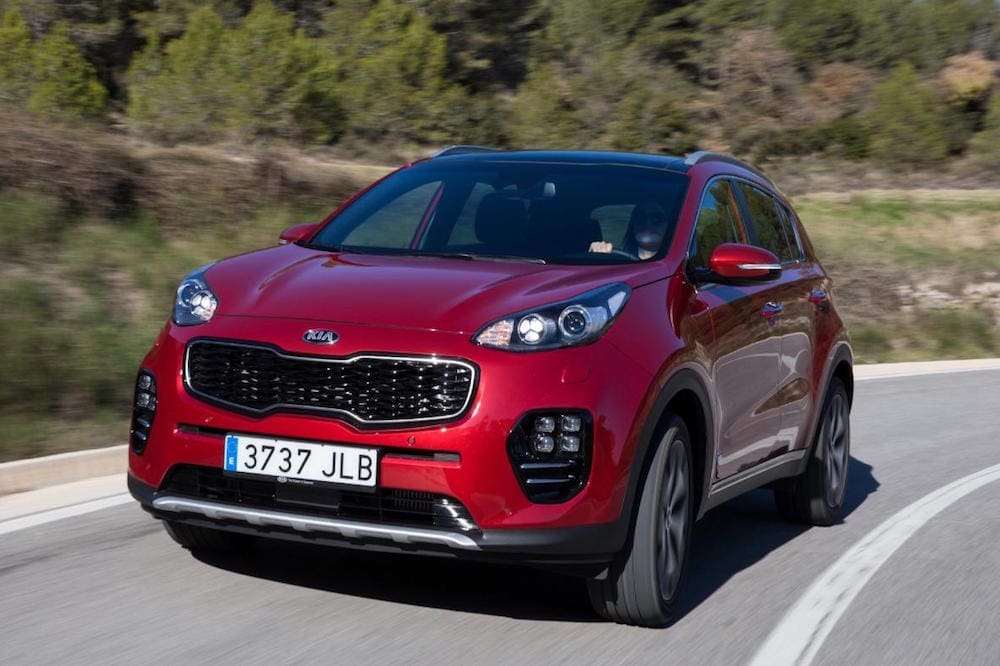



Michael Cole, Chief Operating Officer, Kia Motors Europe, commented: “The Kia Sportage has been a major contributor to Kia’s sustained growth and success across Europe in recent years. Made here in Europe, it’s an incredibly important car for us. More customers than ever are turning to SUVs, and there is now greater competition in the compact segment than ever before.”
The Kia Sportage is manufactured at Kia’s production facility in Zilina, Slovakia, and remains the brand’s best selling model in Europe, with more than 105,000 sold in 2015, accounting for 27.4 per cent of Kia sales.
The design of the new Sportage was led by Kia’s European design studio in Frankfurt, Germany, with input from the brand’s Namyang, Korea and Irvine, California design centres. The “face” of the Sportage features the biggest change to the car’s design over the outgoing model, with Kia’s hallmark ‘tiger-nose’ grille and the car’s headlamps separated for the latest model. The new car has a 30 mm longer wheelbase is 40 mm longer overall, with a longer, more aerodynamic rear spoiler resulting in a more swept-back shape. It is also the most aerodynamic Sportage to date, with drag reduced from 0.35 to 0.33 Cd.


The new Sportage also scored a maximum possible five-star safety rating in the Euro NCAP crash performance tests. The structure of the new Sportage is significantly stronger, thanks in large part to the extensive use of advanced high-strength steel to improve joint stiffness and introduce more effective impact load paths throughout the body. The new Sportage also performed well in the Euro NCAP’s important Safety Assist category, which analyses the latest driver assistance technologies and their effectiveness in avoiding accidents and mitigating injuries.
The fully-independent front suspension carries over the format of the outgoing model, but features a range of modifications to make the best use of the new bodyshell. For the rear suspension the new Sportage receives modifications such as a stiffer cross member to cut road noise and vibrations from intruding into the cabin. There’s also a new electric motor-driven power steering system mounted directly on the steering rack, rather than on the column. As before, there’s a choice of front- and all-wheel drive.
The fourth-generation model carries over many of the diesel and petrol engines found in the current vehicle, with improvements to fuel efficiency, NVH and power delivery. Every engine in the range is compliant with the latest Euro 6 emission standard.


The 2.0-litre turbodiesel is available with two power outputs – 134 BHP with 275 ft-lb of torque, and 182 BHP with 295 ft-lb – with both benefiting from a 5 kg lighter engine block, up-to-date battery management system, continuously variable displacement oil pump – which senses and modifies oil pressure in real-time – and a new oil filter module.
Lower combustion temperatures in the 2.0-litre ‘R’ engine have reduced NOx emissions to meet strict new emissions standards, aided by a relatively low compression ratio, a new exhaust gas recirculation cooler system, and a new lean NOx trap. A lower-inertia turbine wheel in the turbocharger and electronically-controlled wastegate actuator result in more efficient turbocharging than the ‘R’ engine found in the outgoing Sportage, while stiffer valve springs and high-pressure 2000 bar fuel pump injection allow closer control of combustion within the engine cylinders.
The high- and lower-powered versions of the 2.0-litre ‘R’ diesel are available on the standard Sportage or with the GT Line specification. There’s a choice of six-speed manual and automatic transmissions.
© Motorworld Media 2023
Registered Office: 4 Capricorn Centre, Cranes Farm Road, Basildon, Essex. SS14 3JJ
Company Number: 8818356
Website designed by Steve Dawson